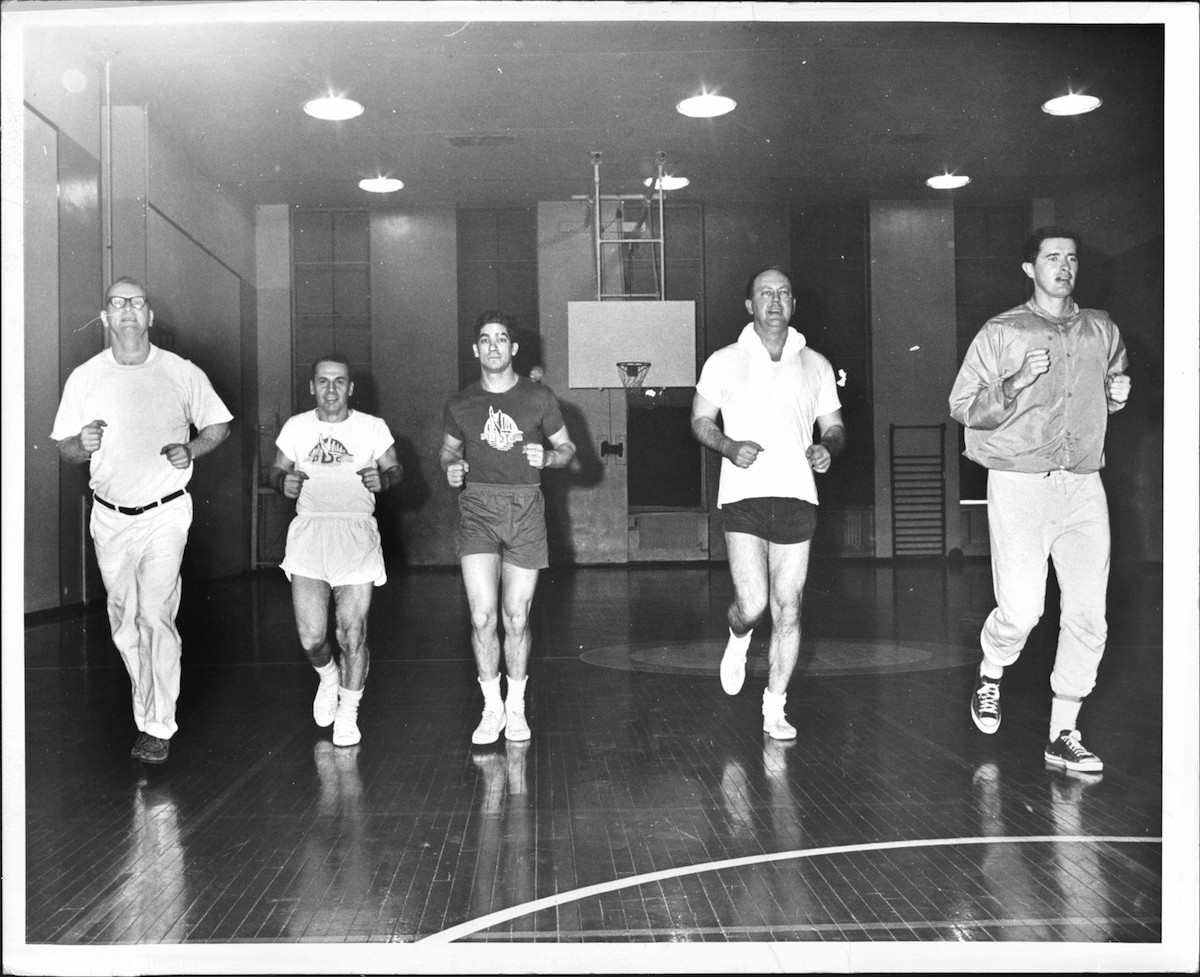
Though runners and joggers around the world will mark Global Running Day on Wednesday, the idea of running for fitness hardly needs an awareness day: running is now seen as one of the most basic forms of exercise for health, and recent studies have continued to confirm that its benefits are many. But that wasn’t always the case.
Serious athletes have long run for training and sport— a foot race was the original Olympic competition, as long ago as the 8th century BCE — but the idea that regular people would run just to keep fit, and that becoming a runner required no special athletic ability, is a relatively new one.
Though experts disagree about exactly what sparked the running craze — a 1968 LIFE story credited the then-new book Jogging, for example — TIME’s 1968 examination of what then seemed to be a sudden “national middle-aged obsession” with getting fit pointed a finger at one particular cause. “Dwight Eisenhower’s 1955 heart attack, the most highly publicized coronary occlusion in history, is usually cited as the trigger of this national impulse to perspire for the sake of health,” the article explained.
In late 1955, just as his possible campaign for reelection the following year was being debated, the popular President Eisenhower had suffered what was billed by the White House as a moderate coronary thrombosis, while on vacation in Colorado. Eisenhower recovered fairly quickly — and did successfully run for president again the following year — but the possibility of a heart attack felling the sitting American president caused the nation to give itself a hard look in the mirror.
In a cover story about heart disease that came a few weeks after the President’s heart attack, TIME noted that “heart disease has become the typical American illness,” and yet it was still poorly understood at the time what caused it and how to prevent it. Though doctors disagreed on those points, University of Minnesota physiologist Ancel Keys made the case that physical exercise was undoubtedly part of the issue.
As TIME later explained, though all sorts of exercise got a boost from Eisenhower’s example, running was the most prominent:
Eisenhower’s heart specialist, Paul Dudley White, seized his moment of national prominence to lecture the public repeatedly on its deplorable shape, suggesting that the tone of the body has much to do with the pace of the mind. “The better the legs,” said White, still bicycling today at 81, “the clearer the brain.” There is little doubt that some triggering was necessary. For the first time in history, a society found itself so advanced materially that human beings no longer got enough exercise in the search for sustenance. Estimates suggest that 40 million Americans have a temperamental indisposition to any kind of hard physical work. Research by the University of California’s Dr. Hardin Jones indicates that, if the circulatory system is any clue, the average U.S. male becomes middle-aged at 25. American women shape up no better, beneath their facade. “They have such beautiful hair, beautiful faces,” says German Antoinette de Haass, who teaches dance at an Elizabeth Arden salon in Chicago. “But when they take off their clothing, what do you see? A calamity!”
The question that troubles the lazy, the suspicious, the cynical and even the practical is whether all this exercise really does any good. Some claims appear extravagant. Former Detroit Lions Back Dick Woit, who conducts a spartan exercise course for men at Chicago’s Lawson Y.M.C.A., insists that his workouts relieve hangovers, nervous stomachs, bad tempers, potbellies, headaches and marital strife. A special exercise regimen for convicts, devised by Bonnie Prudden, is supposed to reduce recidivism, or criminal backsliding.
…Whatever the claims, nearly all medical men who have given serious consideration to the matter agree that a regular program of exercise is not only good but also quite necessary for human well-being amid the tensions of contemporary society. By general agreement, the best exercise for most people is walking, then jogging, then running. These activities have the important side advantages of requiring no skill or equipment while offering endless opportunities for self-congratulation.
It didn’t hurt that, though scientific evidence of the benefits of exercise like running and jogging was few and far between until the 1960s, the President’s heart attack had prompted studies to examine and confirm that idea.
In the decades that followed, running would get even more popular. In 1981, running was featured as part of a TIME cover story about the “fitness craze” and, more than a decade after that, President Bill Clinton made jogging part of his routine in Washington. These days, according to the Bureau of Labor Statistics, running is in the top three most common exercise activities for all Americans.
More Must-Reads from TIME
- Cybersecurity Experts Are Sounding the Alarm on DOGE
- Meet the 2025 Women of the Year
- The Harsh Truth About Disability Inclusion
- Why Do More Young Adults Have Cancer?
- Colman Domingo Leads With Radical Love
- How to Get Better at Doing Things Alone
- Michelle Zauner Stares Down the Darkness
Write to Lily Rothman at lily.rothman@time.com